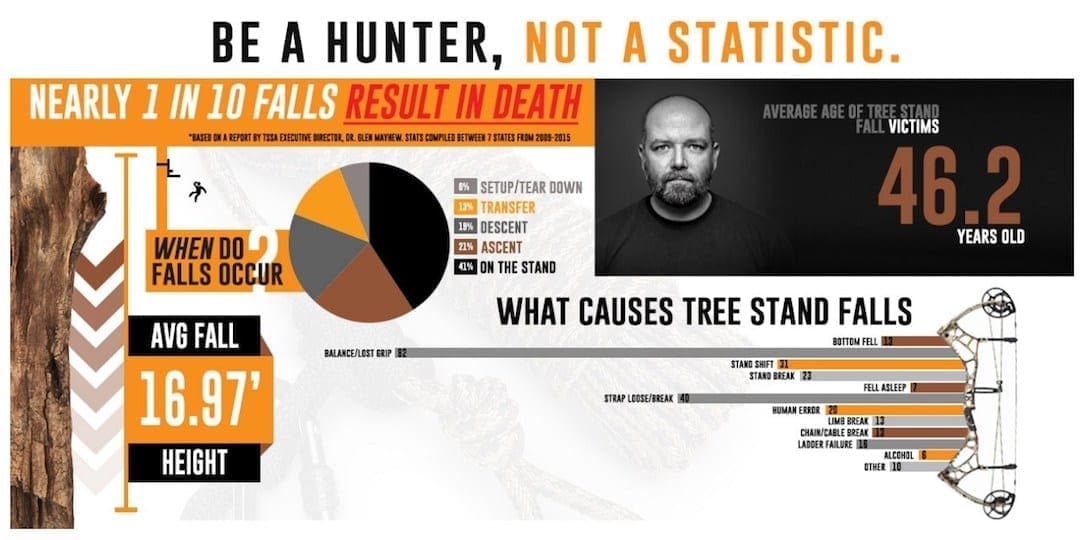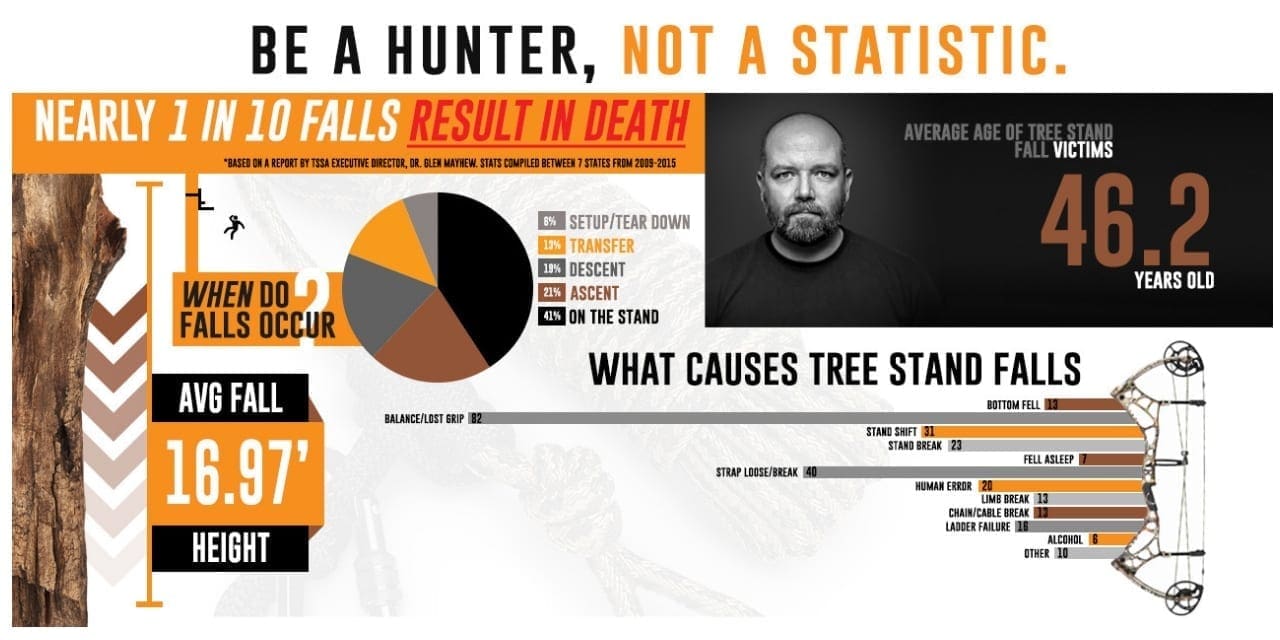Tree Stand Safety: Why it matters to you

Tree Stand Safety is a key component of the overall hunting experience.
Tree Stand Safety: Why it matters to you By: Sean Ferbrache, COO of American Hunting Lease Association
It would appear that we are at a crossroads. The proverbial “fork in the road.” As hunters, or as someone who knows a hunter, we can either make the decision that some tree stand falls are acceptable, even inevitable; or we can decide that tree stand safety is a key component of the overall hunting experience.
According to data from the Tree Stand Safety Awareness Foundation, there have been 724 reported falls in the last five years (91% resulting in injury and 9% resulting in fatality). And those are just the falls that were recorded. With 36.82 million hunting licenses, tags, permits and stamps granted in the U.S in 2017, that means there could be an exponential amount of falls.
There are too many other things for hunters to worry about this season, which is why tree stand safety shouldn’t be one of them.
Let me tell you a story.
When I was younger, one of my favorite uncles took me to a farm he had permission to hunt, put a gun in my hand and pointed me in the direction of a cut pasture. I made my way through the fog and dark to the open field and had a seat on the ground. Once the sun came up and the woods were fully awake, I noticed what looked like a chair or seat chained to a tree about 30 feet in the air above me.
Clearly, it wasn’t anything I was interested in, but I did ask my uncle about it. He told me it was a tree stand that someone had left. He explained that I would be able to see better from it and that it was the way most people hunted. I was slightly surprised when he told me to sit in that old tree stand, but as a first time hunter, I followed directions. Frankly, I didn’t feel like I had much of a choice.
It seemed like it was 100 feet in the air, but I climbed up and had a seat. Not surprisingly, there was no harness, no belt of any kind, no pull rope, and really, not much of a stand at all. I might have sat in that stand for three minutes before I followed my instincts (and limited intelligence) and climbed down. I thought, “If this is deer hunting, I am not sure I want to do it.”
I wonder how many potential hunters have had a similar experience and decided hunting wasn’t for them? With nearly 1 in 10 falls resulting in death, it’s no wonder. It’s time to put a stop to that now. I don’t want to deter any more hunters and I want to ensure everyone is safe when using a tree stand.
As a beginner, or even veteran hunter, tree stand safety shouldn’t be seen as a burden, but rather another part of your routine, just like putting on scent blocker, securing your weapon or preparing your dog to join the hunt. Below are the ABC’s of tree stand safety along with other best practices and tips.
Don’t be a statistic, don’t be stubborn and don’t get hurt this season.
The ABC’s of Tree Stand Safety
A. Always remove and inspect all of your equipment before using it. (35% of all falls involve some inspection element.)
B. Buckle your harness securely. (86% of fall victims did not wear a harness.)
C. Connect before your feet leave the ground. (99% of fall victims were not attached to the tree.)
Those are easy enough to remember. So are these two steps:
- Wear your harness. Every time you hunt from a tree stand, you should have a harness. That means if you leave it at home, you are hunting on the ground. If you leave it in the front seat of your truck and you realize it just as you reach the tree…don’t even consider it…turn around and walk your butt back to the truck.
We’ve all been there I’m embarrassed to admit, but I have hunted with my pants belt looped through the stand itself. I have no idea how I would have stood to draw my bow, and surely I would have ripped my pants during a fall. But at that moment I felt safe. Never again. No one that hunts on my lease will ever climb a tree without a safety harness and a lifeline. It is our number one rule and it is non-negotiable.
- Connect the harness. Over half of falls occur when a hunter is either climbing up, climbing down or transferring from the ladder onto the platform. Even the best harness on the market can’t stop you from falling if it isn’t connected to some type of tether. The introduction of a simple, elementary tether concept has already saved lives.
What is this tether concept? Also known as a lifeline or safety-line, it is:
- An appropriately rated style of rope that is approximately 25 to 30 feet long.
- Includes a loop in one end, that’s simply wrapped around the tree above the stand, with the tag end running through the loop.
- The tag (or the end not looped) is left to hang to the ground where it’s secured to the tree itself.
- A smaller diameter rope is used on the lifeline and is tied in a prussic knot. This is a simple knot that slides freely up and down the lifeline, but once a sudden downward pressure is applied, the knot grips the rope and doesn’t allow any further descent. In some regard it’s very similar to a seat belt.
- Used in conjunction with a safety harness that allows you to connect your harness before you ever leave the ground.
So, the physical solution is a simple process. On every tree stand you have, you must have a lifeline installed so you can climb and descend safely. When you use this combination — and when you demand your hunting partners use it — you have effectively eliminated the threat of falling from your tree stand.

